Badischer
Kunstverein 2023
The Kale Bed is so Called Because there is Always Kale in it. An exhibition and program on cultures of cultivation by artist and researcher Åsa Sonjasdotter at the Badischer Kunstverien, October 5 to December 3, 2023.
The exhibition features collaborations with artist and photographer Mercè Torres Ràfols; artists and researchers Elske Rosenfeld and Misha Lylov; the Grain Association Allkorn and plant breeder Hans Larsson; and artists Fatima Alaiwat, Sophie Hughes, Linnea Johnels, and Emma Ross-Sermons. Further, the exhibition features an accompanying program with contributions by among others artist and researcher Daniela Elisabeth Zambrano Almidón, and curator and researcher Gatari Surya Kusuma.
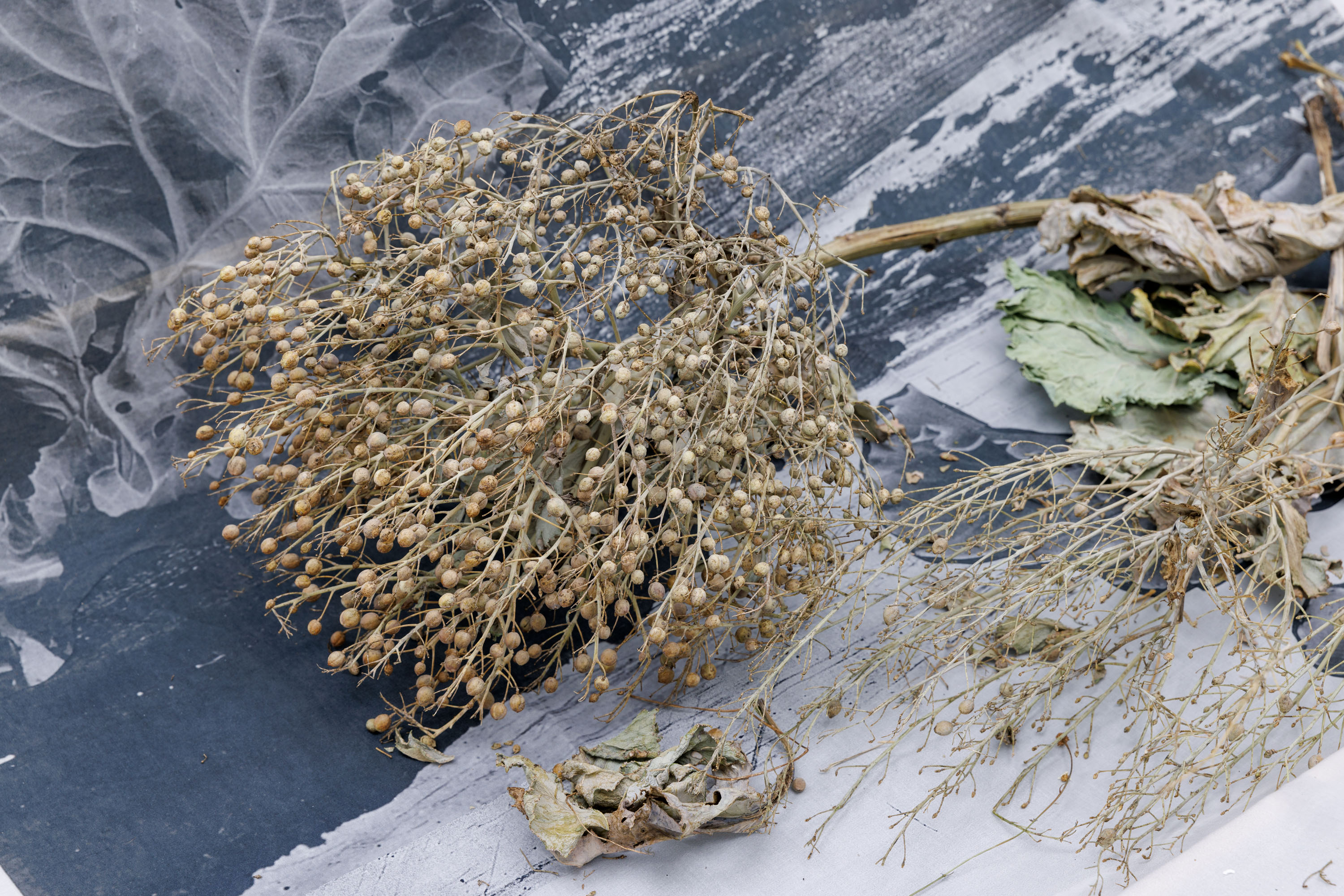
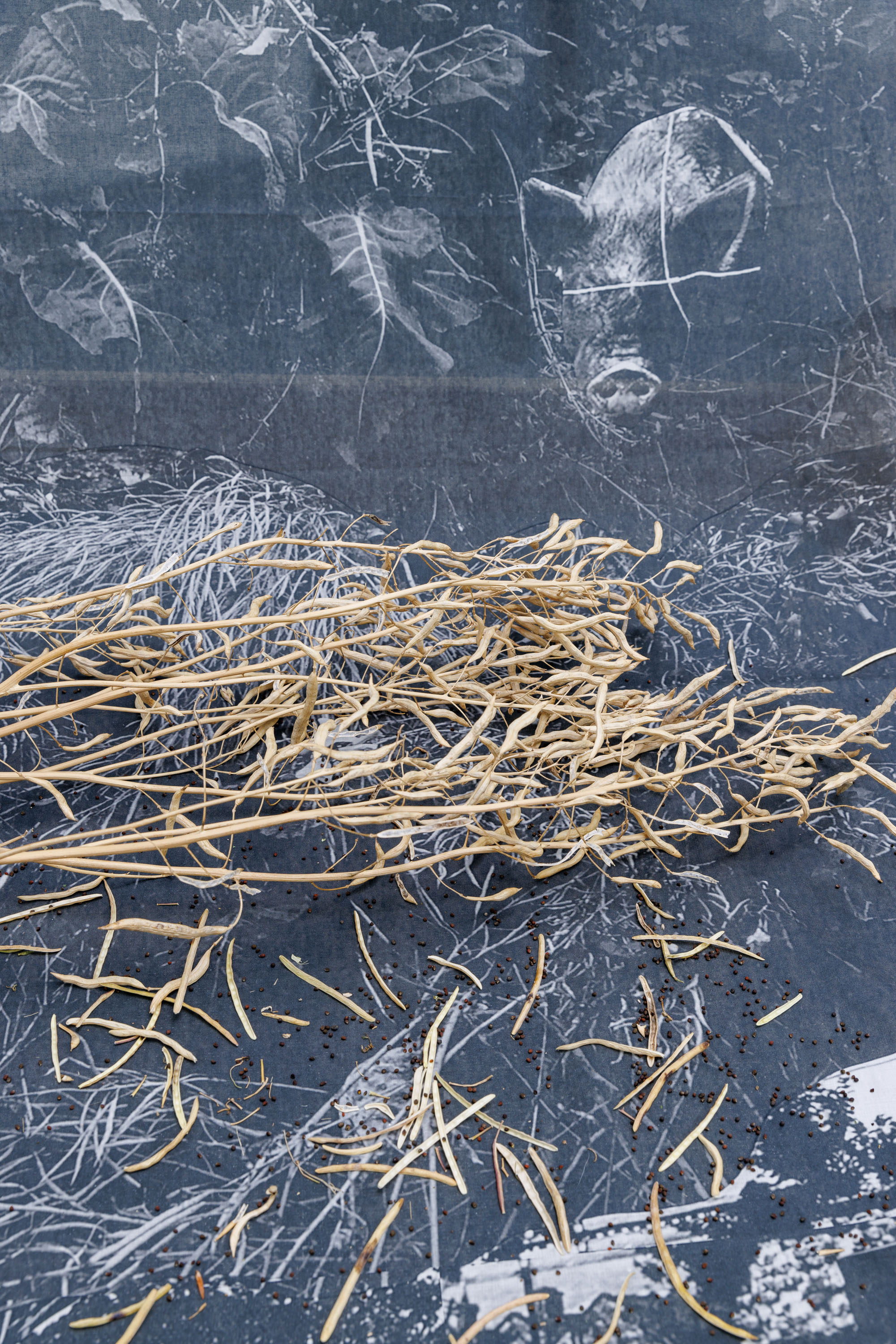

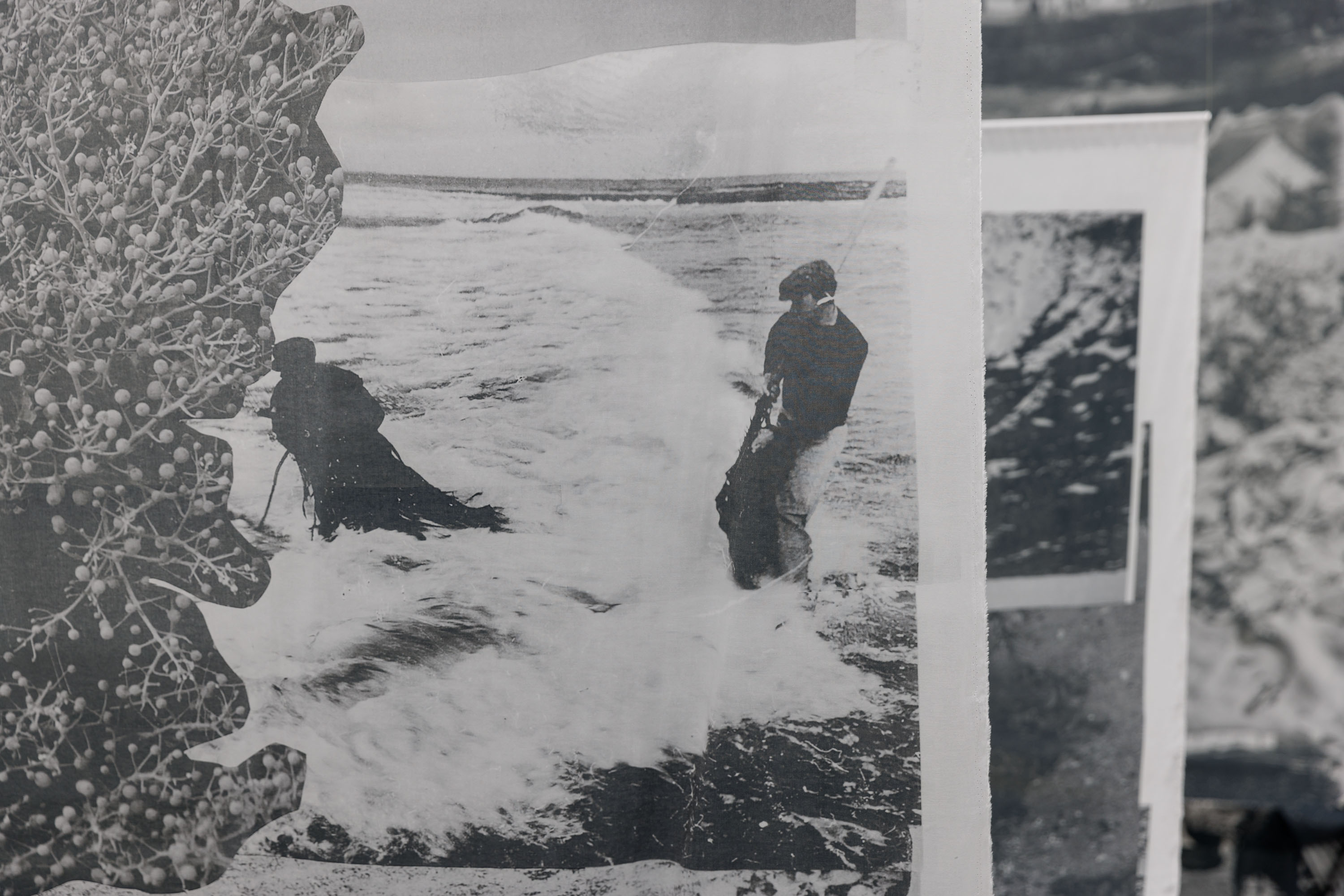
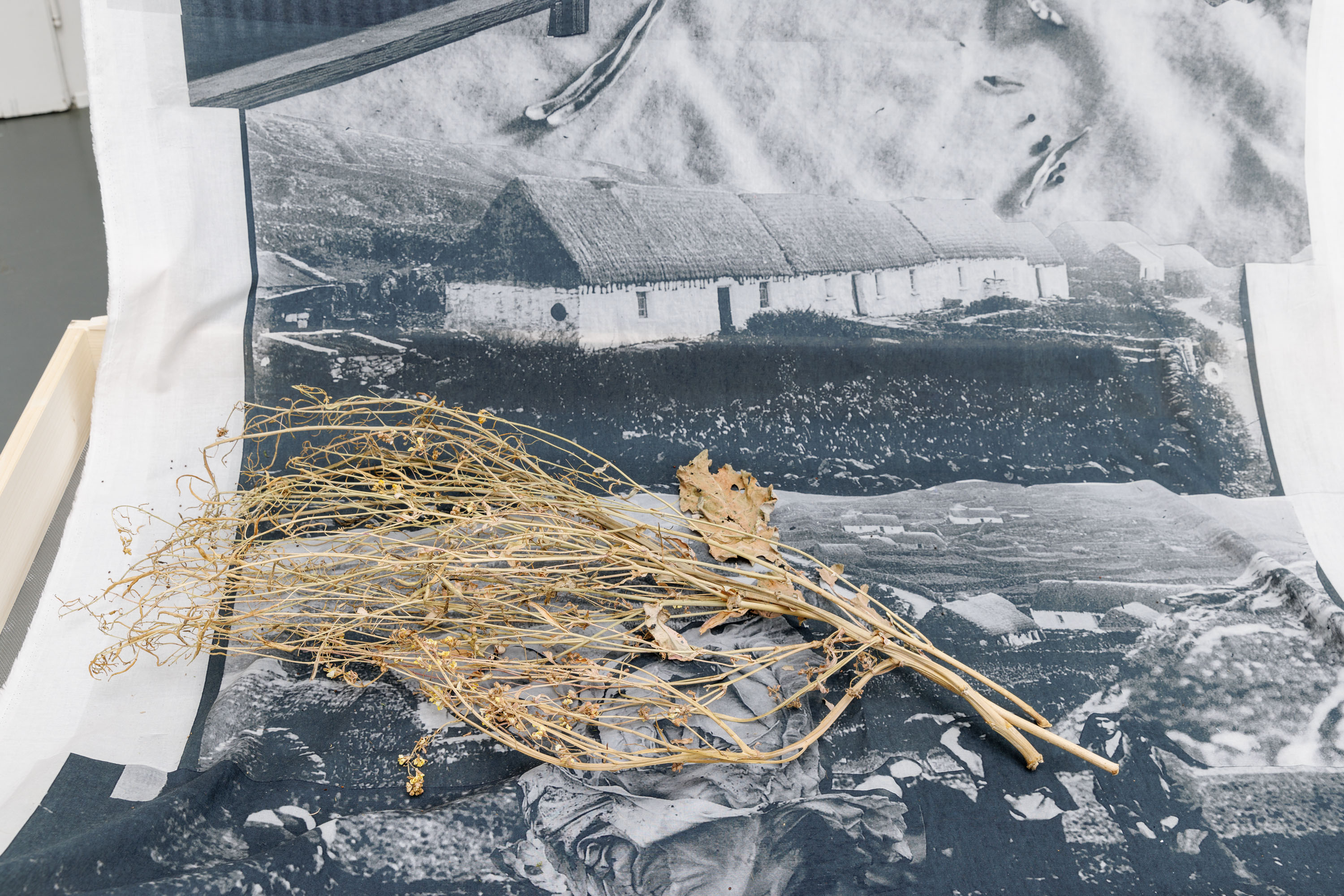
The Kale Bed is so Called Because there is Always Kale in it. Installation aby artist and photographer Mercè Torres Ràfols and artist and researcher Åsa Sonjasdotter. Badischer Kunstverien, 2023. Photography by Felix Grünschloß.
The research, production, and publishing of The Kale Bed Is so Called Because There Is Always Kale in It has been carried out by Åsa Sonjasdotter in Ireland and beyond since 2017. The installation consists of dried kale flowers with seed pods; fabric suitable for the saving of seeds, with printed collages of images tracing trajectories of cultivated, rewilded, and wild kale in Ireland; as well as further traces of the artist and their collaborators’ long-term dialogue through and with kale in Ireland.
The elements of the installation refer to the practice of seed saving such as large cloths onto which the seeds can drop, strainers, fragments of photographic and other documentary material, dried pods of flowers, as well as the colour spectre of kales.
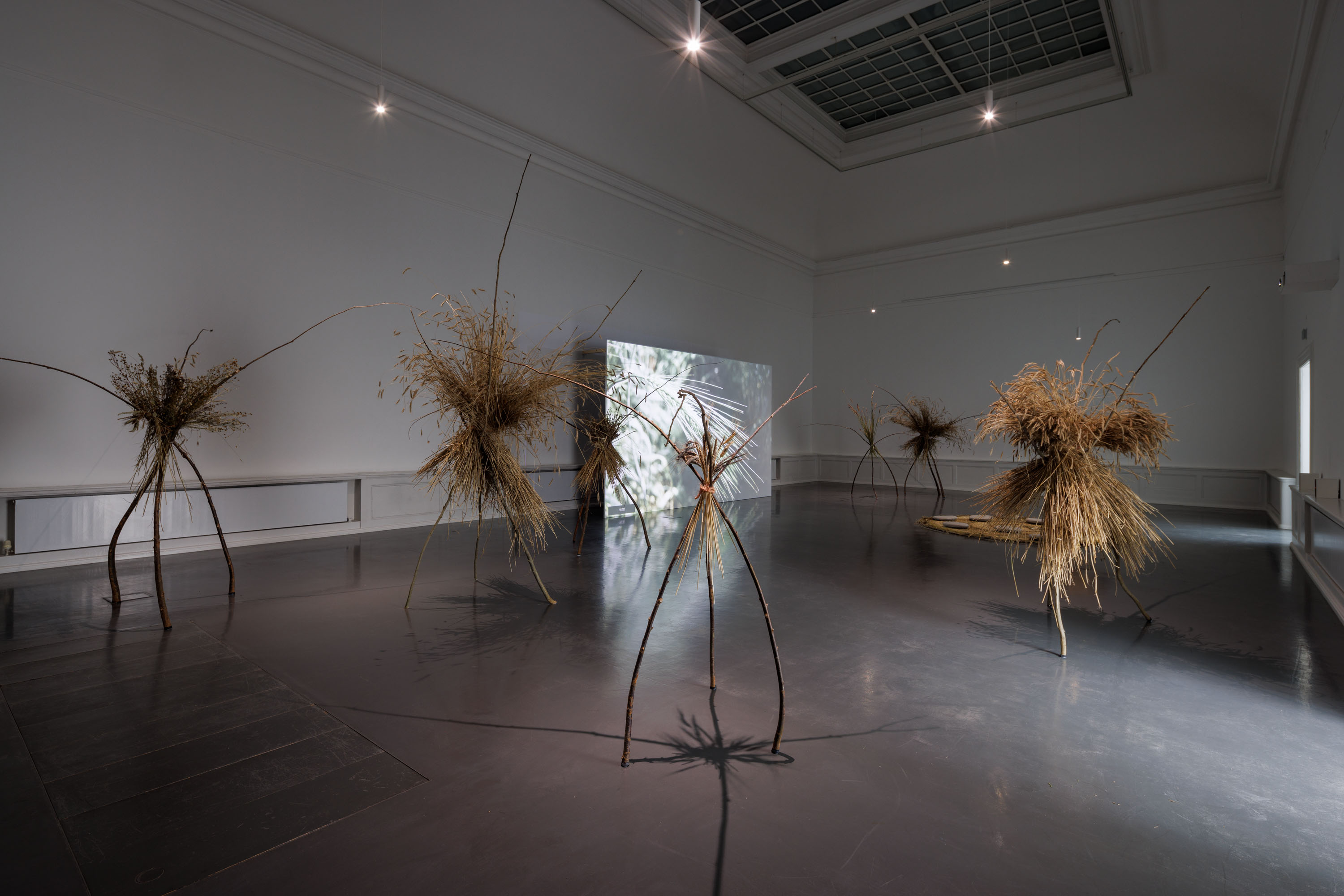
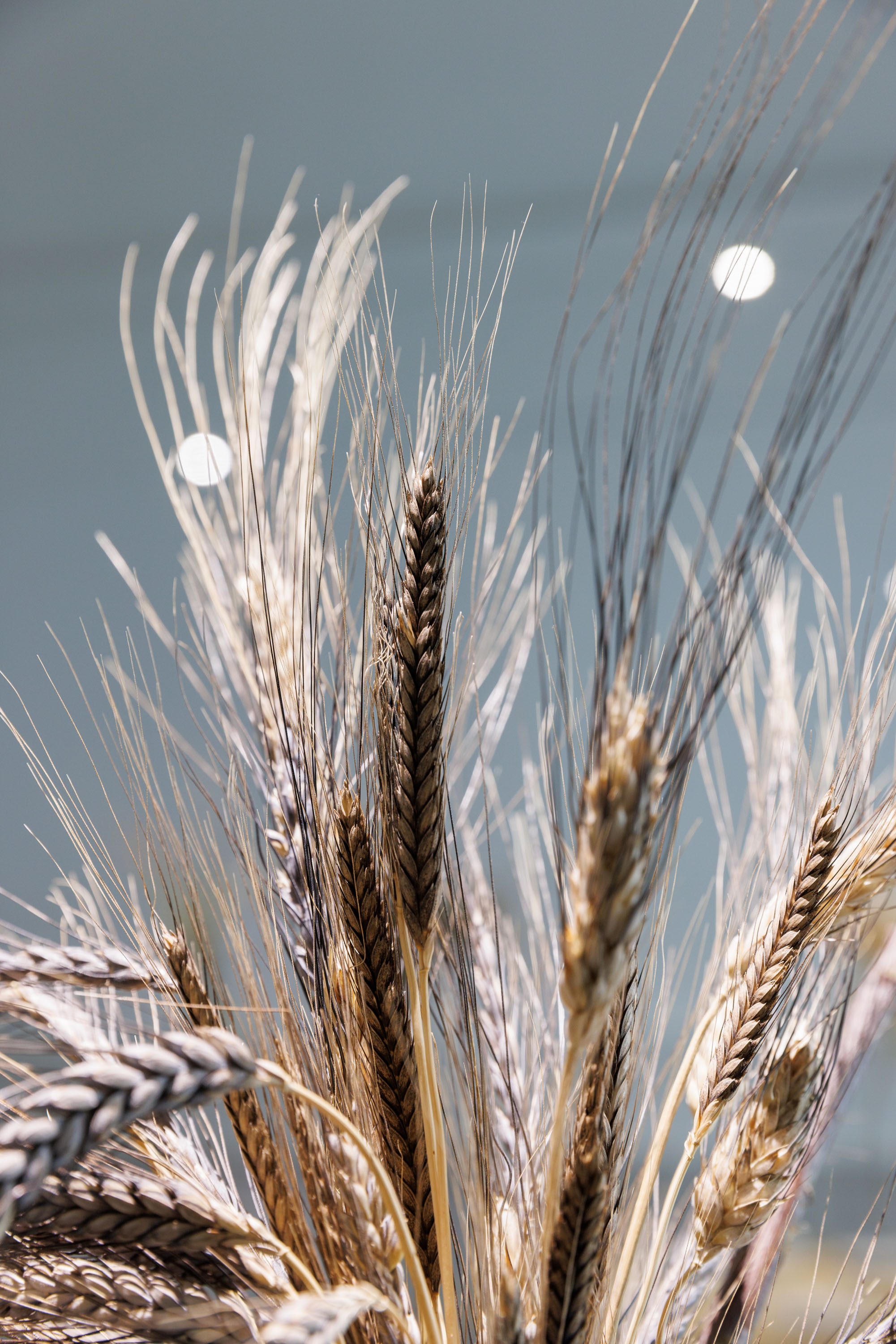

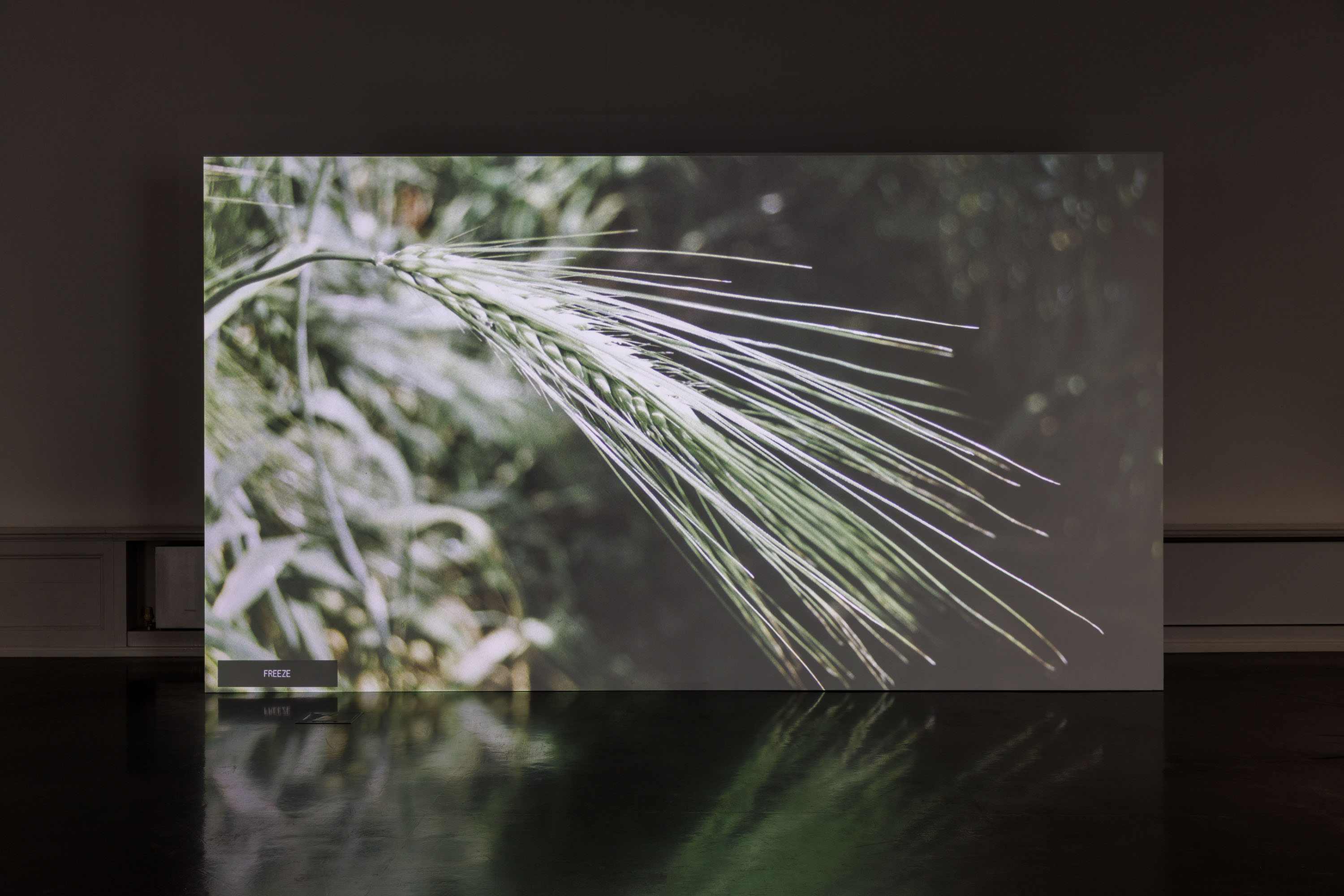
Cultivating Abundance. Installation including peasant bred grains by Åsa Sonjasdotter and Emma Ross Sermons. 2023, as well as the film Cultivating Abundance by Åsa Sonjasdotter made in dialogue with Hans Larsson and the grain association Allkorn, 64 min, 2022.
I. The installation of grains demonstrates reclaimed traditionally bred and grown grains that are in custody of the association Allkorn. The plant breeder Hans Larsson has continuously, every year since the 1990s, lifted a set of grains out of the deep freezers of the Nordic Gene Bank to thaw and regrow them under careful monitoring. Slowly, over decades, the few deep-frozen grains have been brought into re-existence in the farmers’ fields.
II. The film returns to the moment when a technique for the breeding of monoculture crops was invented at the Swedish Seed Association, beginning in the 1880s. The method was developed based on ideas of genetic ‘purity’ and ‘originality’, a science fiction by which current seed laws still operate and seed industries continue to claim royalties. Further, the film follows plant breeder Hans Larsson and the seed alliance Allkorn’s clandestine mobilization for the reclamation of peasant-bred grains that were stored in deep freezers in gene banks following the monoculture takeover. Assembling gelatin silver glass plate photographs and moving images re-found in a cold store barn, as well as filmed material by activist farmers and breeders, Cultivating Abundance is made in dialogue between Hans Larsson, Allkorn, and the artist Åsa Sonjasdotter.
III. The carpet is made of straw from the varieties presented in the film and the installation.




The invention of monoculture plantbreeding. Archival traces I. - III. These photographs and films presented, document the process by which the technique of monoculture plant breeding was invented. The reprints of the gelatine silver-glass plates from the Swedish Seed Association represent the method tested there for cultivating uniform and standardised crops. The films give a more detailed insight into the activities the Swedish Seed Association with which they implemented the new breeding methods.
The invention of monoculture plant breeding delivered ’proof’ to arguments
regarding biopolitical currents striving for hygienisation towards the uniformation of lifeforms. As a result, the State Institute for Racial Biology was opened in Uppsala, Sweden, in 1922. This, as well as the Swedish Seed Association, would become models for the establishment of corresponding institutional complexes in further countries. As an example of the uptake of these practices in Germany, a reprint of a private photo album of an employee at the Institut für Züchtungsforschung (Institute for Breeding Research) of the Kaiser Willhelm Gesellschaft in Müncheberg can be seen in this cabinet.
I. Gelatine silver glass-plates from the Swedish Seed Association in Svalöv, 1886 – onward. Re-photographed by Mercè Torres Ràfols. Xerox-printed on paper made by agro-industrial waste. Reproduced with permission from Lantmännen, Sweden.
II. Loop of films: The Wizards. Digitalised copy of VHS copies of 16mm journal films documenting the activities at the Swedish Seed Association (13.21 mins). Reproduced with kind permission from Lantmännen, Sweden; Untitled. Digitalised copy of VHS copies of 16mm journal films documenting the activities at the Swedish Seed Association (19,14 min). Reproduced with kind from Lantmännen, Sweden; The National Economic value of Plant Breeding. Digitalised copy of VHS copies of 16mm journal films documenting the activities at the Swedish Seed Association (22.25 min). Reproduced with kind permission from Lantmännen, Sweden.

III. Photographs, private photo album with inserts of staff member Klaus v.d. Lancken at the Kaiser Kaiser Willhelm Gesellschaft Institut für Züchtungsforschung in Müncheberg. Reproduced with kind permission from the Archiv der Max-Planck-Gesellschaft, Berlin, VI. Abt., Rep. 1, R 35. Disclaimer: The artist and the Badischer Kunstverein respectfully ask visitors to be aware that this piece might contain unintended depictions that could be distressing or violent. We are against any form of violence. The purpose of displaying these images is to recognize the source of an ongoing violence towards overcoming it.

Peace with the Earth. Archival traces I. - IV. The authors of the pamphlet Peace with the Earth, Elin Wägner (1882–1949) and Elisabeth Tamm (1880–1958), were active in a transnational movement of radical, non-conformist women, many of whom would today most likely call themselves queer-feminist. They operated between and across established, accepted, and legally sanctioned societal structures such as patriarchal family orders, scientific disciplines, political parties, and religious communities. Their argument was that war and war-like relations cannot be undone until patriarchal, fascist, and colonial domination is overcome. They also recognized that, as Wägner states in the introductory chapter, “This involves a paradigm shift and all that it entails in terms of social change.”
The still-ongoing and rapidly escalating exploitation of earthly life by corporate and state-sanctioned powers re-actualizes the call of this pamphlet. To translate and re-read it across languages, locations, and practices today is a way to reconnect to the wider discussions that the knowledge captured in this pamphlet has emerged from – for current debates to gain continuity, depth, and scope.
I. Elin Wägner and Elisabeth Tamm by Hjälmaresund, Fogelstad, Sweden. August, 1921. Photographer unknown. Re-photographed by Mercè Torres Ràfols at KvinnSam, the National Resource Library for Gender Studies, The University Library, Gothenburg, Sweden.
II. Excerpt of diary by Elin Wägner, 1936‐1942. Reproduced with permission from KvinnSam, the National Resource Library for Gender Studies, The University Library, Gothenburg, Sweden.
III. The 2022 edition of Peace with the Earth shown in the exhibition includes a conversation between artist Åsa Elzén; writer, editor, and educator in art and ecology Ros Gray; and artist and editor of this publication Åsa Sonjasdotter. Further, it includes an introduction from the 1982 and 2014 Swedish editions by artist and farmer Flory Gate, as well as an expansion of key references.
IV. Unpublished translation manuscript of the book Peace with the Earth into German language. Translator unknown. Year unkown. Reproduced with permission from KvinnSam, the National Resource Library for Gender Studies, The University Library, Gothenburg, Sweden.



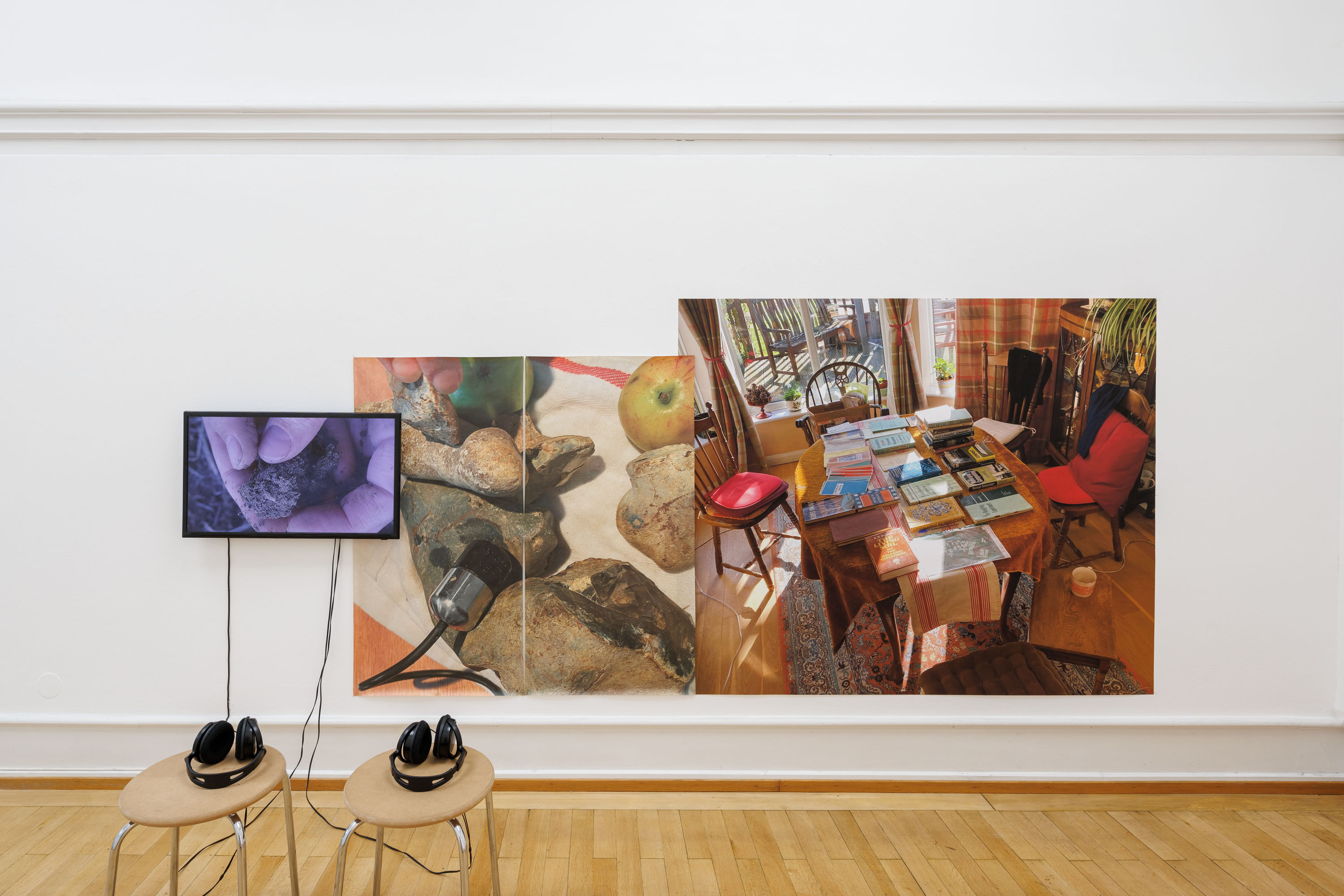
Chemical, Organic, and Mixed: A speculative (re)visit to the soils of the Haughley Experiment. Archival traces I. - IV.
These photographs, leaflets and a film document a research project and public event realised by Åsa Sonjasdotter in collaboration with Fatima Alaiwat, Sophie Hughes and Linnea Johnels in Haugley, Suffolk, England on 18 November 2022.
At this site, the Haughley Experiment was initiated in 1939 by the farmers Alice Debenham, Cathleen Karnley, and Eve Balfour, who also was an author. Working with the land they compared the effect of organic, chemical, and mixed farming on soil over a period of thirty years.
The one-day gathering on 18 November 2022 offered a speculative revisiting to the soils and the habitats of the Haughley Experiment.
-> For more information, documentation, and to see the film.


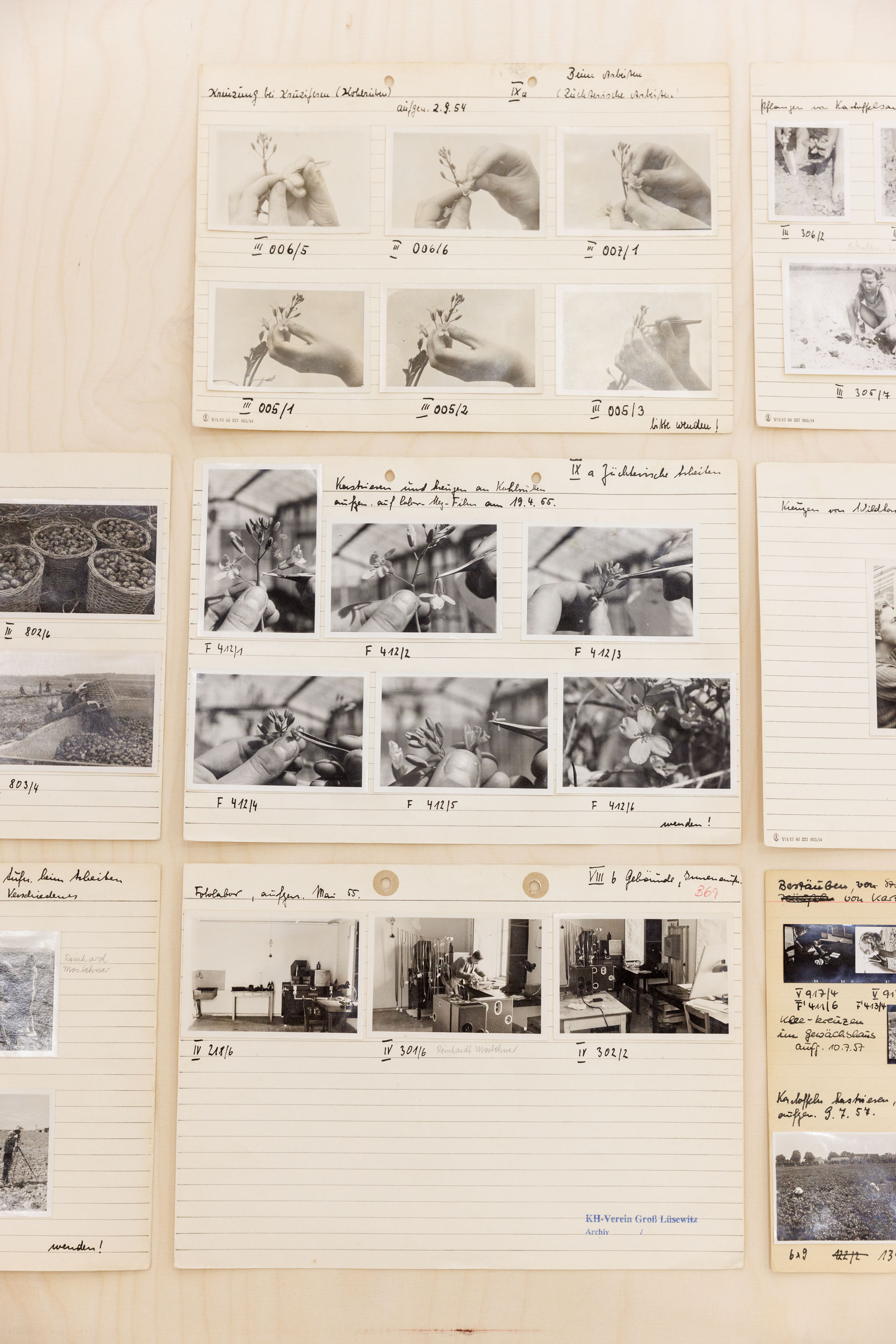

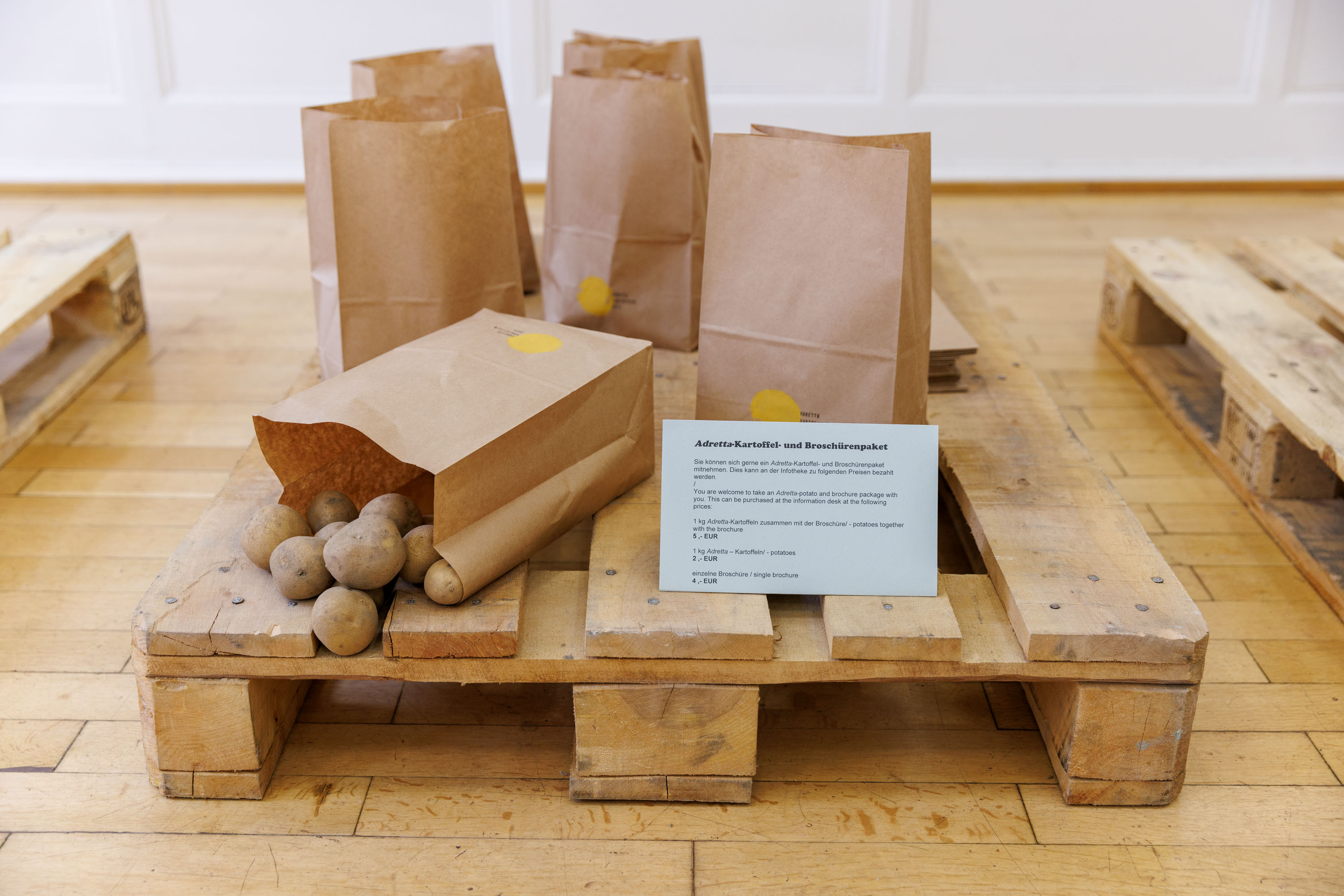

Adretta – On Memory as Practice, Potato Breeding, and a Socialist Model Village in the GDR
Two different archives are at the heart of this story, told in text, images, and by the plant itself. One is the photographic archive of the former Institute for Plant Breeding in Groß Lüsewitz in the GDR (I). The Archive was compiled by photographers employed by the Institute between 1948 and 1990. Its purpose was to document the development of the Institute, as one of the major centres for agricultural research in the Eastern bloc, and of the village itself, as a model village for the industrialisation and urbanisation of agriculture in the GDR. The archive was thrown on a rubbish dump when the Institute was closed down in 1990, and saved by a former employee. It was preserved thanks to the personal efforts of members of the village history club.
The second archive is the potato Adretta (III), which was developed at the Institute and certified here in 1975. Like all cultivated tubers, Adretta is an archive of a breeding process, a continuous human-plant-dialogue, dating back to prehistoric times when agriculture began. Adretta became a success, because of its robustness, which suited the needs of the large-scale farming units of the planned economy. It was soon cultivated widely, not only in East Germany, but also around the whole Soviet Union. After 1990 it no longer met the requirements of the new, capitalist economy. As an archive, Adretta is fragile. It needs to be replanted each season to survive. But it fared better than the photo archive of Groß Lüsewitz: Adretta has become one of the most beloved and prevalent staples of post-Soviet subsistence farmers from Kazakhstan to Siberia.
In the accompanying pamphlet (II) produced in conjunction with this installation, the two archives – processed through research of Åsa Sonjasdotter and Elske Rosenfeld that has been hosted by artist and curator Mikhail Lylov – are enquired as forms of dormant knowledge that are latent or active sources of resistance and dissent. Such knowledge pits itself against a capitalist logic, a way of inscribing human and human-to-non-human relations, that is today proving ever more clearly dysfunctional.
I. Adretta. Installation by Åsa Sonjasdotter. 2012. Archival material kindly lent from Groß Lüßewitz Kulturhistorischer Verein, Groß Lüßewitz.
II. Adretta – On Memory as Practice, Potato Breeding, and a Socialist Model Village in the GDR. A publication made in collaboration with artist and researcher Elske Rosenfeld, and curator and artist Misha Lylov. Initially published as an insert in the book Parallel Diagonals:artistic inquiry into a landscape. The Natural, Architectural-Archaeological Museum-Reserve Divnogorie, Voronezh, Russia. 2016.
III. Adretta potatoes, cultivated by Landwirtschaftsbetrieb Kitzscher, Bad Lausick